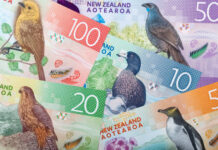Australia’s economy expanded by a modest 0.5%, which was softer than anticipated. Conditions were soft in late 2022, with the adverse impacts of high inflation and sharply higher interest rates becoming apparent. Consumer spending grew by only 0.3%, while total domestic demand stalled. .
The Australian economy expanded by a modest 0.5% in the December quarter.
That was softer than anticipated, Westpac 0.8% and market median 0.8%, range (0.4% to 1.0%).
Annual growth is 2.7%. The level of activity is 7.2% above levels prior to the pandemic, at the end of 2019. Note, that Q3 GDP growth was revised up a fraction, to a gain of 0.7% from 0.6%.
Key surprise: The consumer was the key surprise, with only a tepid 0.3% rise in overall spending. Services were the key disappointment, with only a modest rise. Also, income growth was weaker than anticipated and the decline in the household saving ratio was more pronounced.
While nominal gross household income grew by 1.6%, real household disposable income contracted by a hefty -2.2%.
Hours worked: The National Accounts estimate that hours worked expanded by 2%, eclipsing the Labour Force survey estimate of 1.4%, after a rise of 0.5% in Q3 (a result held back by covid related elevated absenteeism). Over the year, hours worked grew by 6.5%.
Consumer spending grew by only 0.3% in the quarter, well short of our expectation, a plus 0.8%.
The ABS report that growth in discretionary spending (+0.4%) slowed to be more in line with essential spending (+0.3%).
The ABS add, discretionary spending was led by hotels, cafes and restaurants (+1.6%) and transport services (+5.7%), reflecting residual post-lockdown demand. Spending in these categories slowed following four consecutive quarters of strong demand.
Other discretionary spending on recreation and culture (-1.4%), clothing and footwear (-2.7%), and furnishings and household equipment (-1.2%) fell as cost-of-living pressures began to weigh on household budgets.
The household saving ratio moved lower still, down from 7.1% to 4.5%, a reading below the “equilibrium”, judged to be around 6%. This ends a period of excess savings, which has been a feature during the pandemic.
Expenditure detail:
Domestic demand stalled in the December quarter, the weakest result outside of a lockdown period since June 2014. This indicates that the economy hit a soft spot at the end of 2022.
Net exports added a hefty 1.1ppts, on a lift in services led 1.1% rise in exports and a pull-back in imports, (-4.3%), albeit they still rose strongly over the year (+12.1%).
Total inventories subtracted -0.5ppts from activity on a correction of non-farm business inventories after a Q3 run-up centred on some one-offs.
Home building activity declined, down by -0.9%,, with a further pull-back in renovations work, -4.2%, more than offsetting a lift in new home building work, +1.4%.
The real estate sector – in the form of Ownership Transfer Costs (turnover in the property sector) – fell a further -6.2% after the -11.2% plunge in Q3 as rapid interest rate rises bite.
Business investment contracted, declining by -0.8%, led lower by a fall in construction work, as well a dip in equipment spending, -0.2%.
Public demand is cresting at a high level, up only 0.2% in both Q3 and Q4, following a -0.5% for Q2. This follows rapid growth up to the March quarter 2022, boosted by the response to the pandemic.












